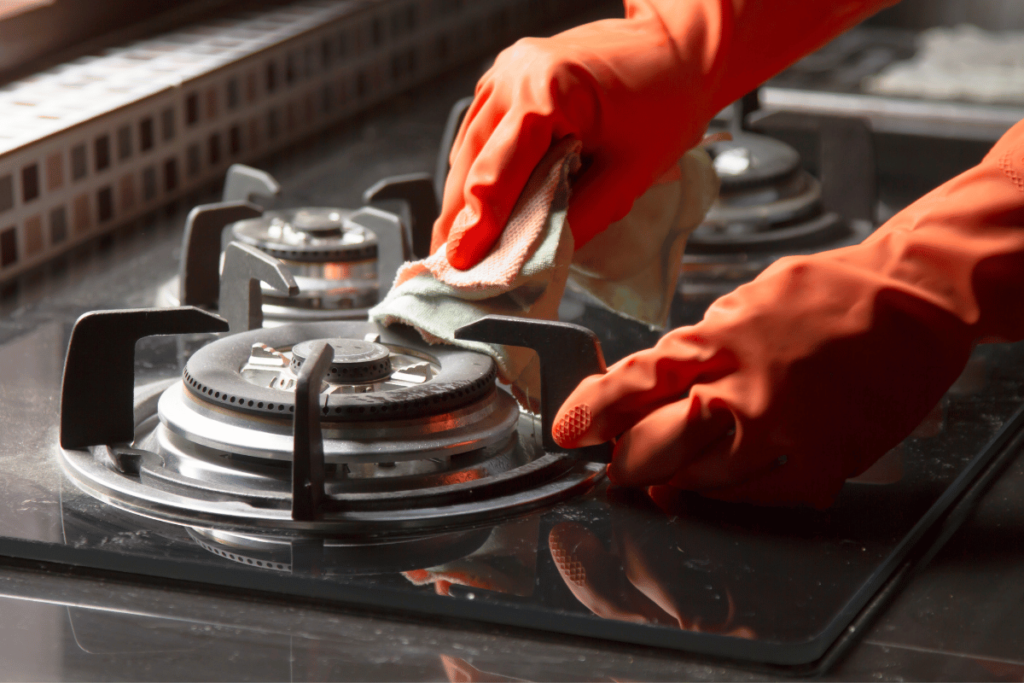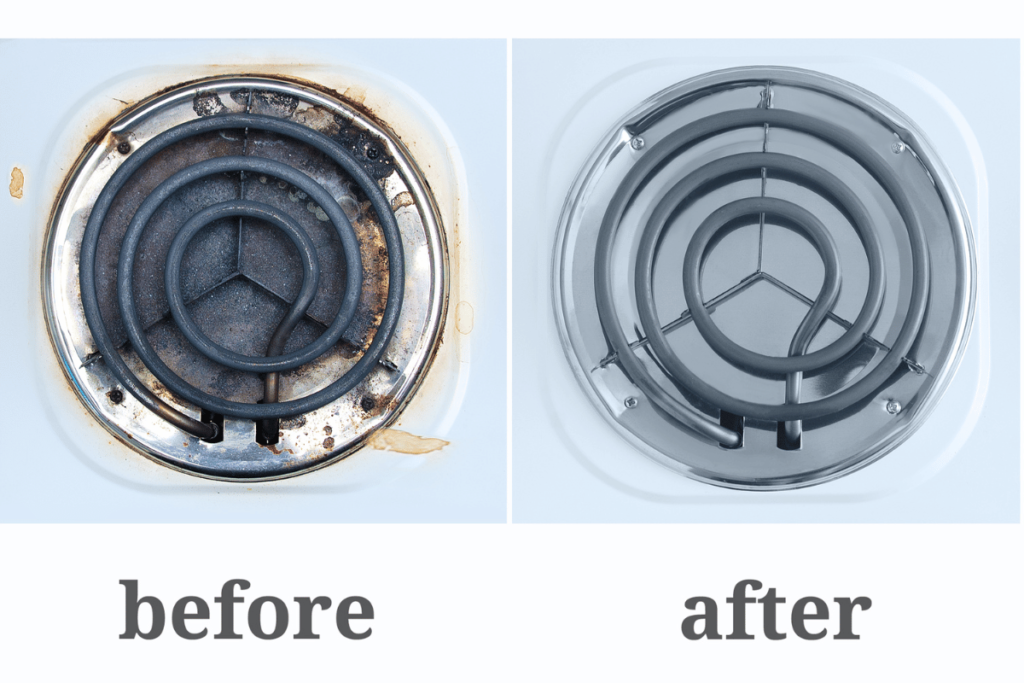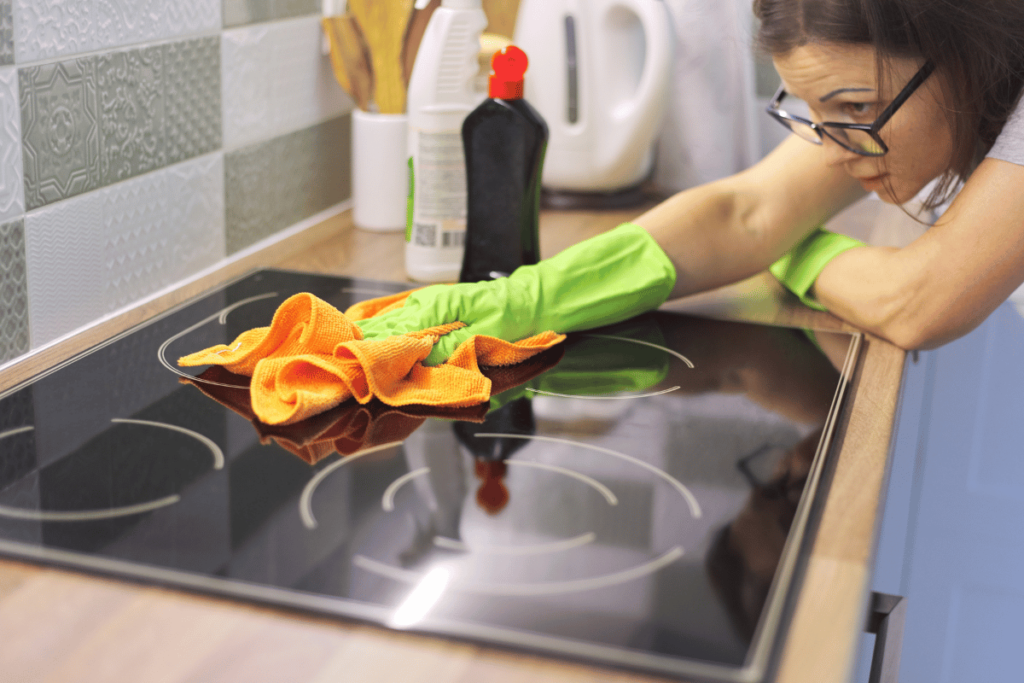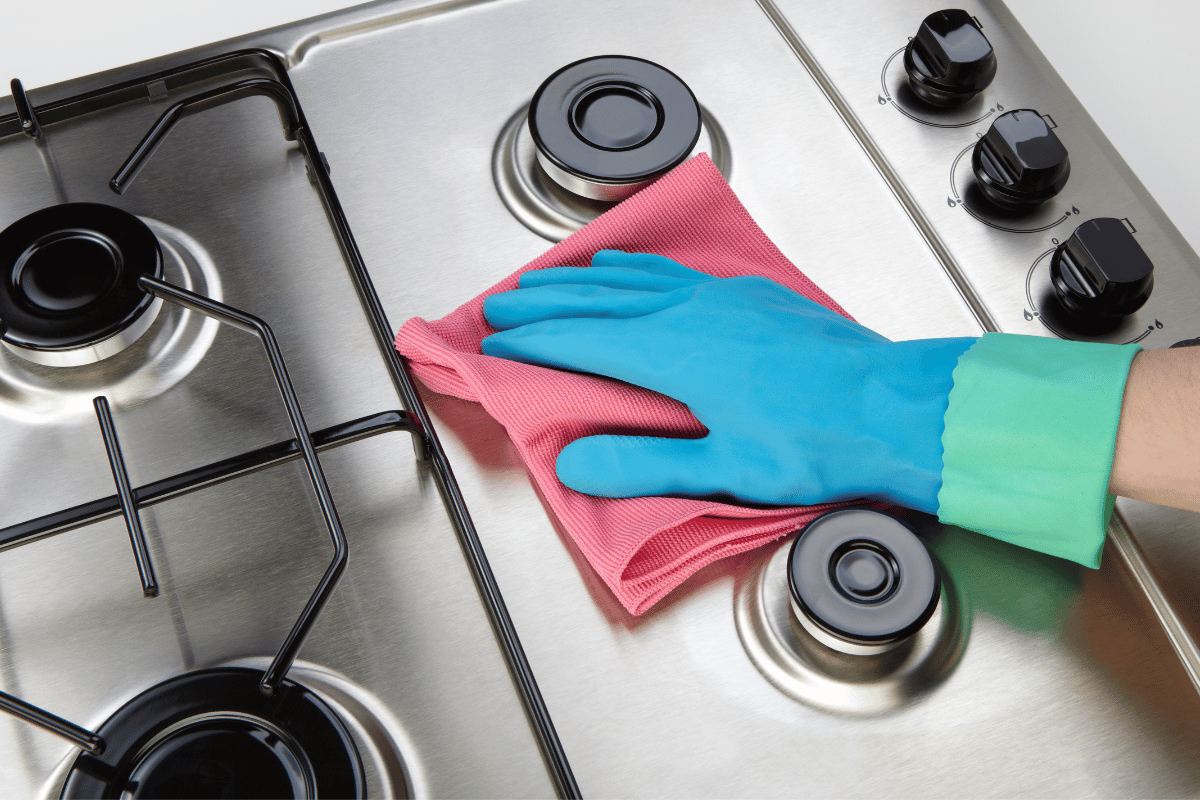Cleaning
How to Clean a Stove Top? A Comprehensive Guide to Maintaining a Spotless Cooking Surface
In any kitchen, the stove top plays a starring role. It’s where culinary magic happens, but it’s also where spills, splatters, and stubborn stains frequently occur. Keeping your stove top clean not only elevates the aesthetics of your kitchen but also extends the life of your appliance. So, let’s dive into a comprehensive guide on how to keep that stove top looking brand new!
Understanding Your Stove Top Type
The make and material of your stove top directly influence its cleaning needs:
- Gas Stove Tops:
- Features: Most homes opt for gas stove tops because they offer direct flame cooking. Their characteristic design includes detachable grates over open flames.
- Finishes: They come in various finishes, from stainless steel, which boasts durability but is prone to visible smears, to enamel, which might stain or get discoloured if spills aren’t promptly attended to.
- Electric Coil Stove Tops:
- Features: Unlike gas stoves, these offer heat through electric coils that glow red when switched on.
- Cleaning Challenges: The spaces beneath the coils, particularly the drip pans, can be notorious for collecting spillovers and crumbs, leading to unpleasant odors or even smoke if not cleaned regularly.
- Glass or Ceramic Stove Tops:
- Features: With their flat and sleek surface, they’re a favorite for modern kitchens.
- Cleaning Challenges: The shiny surface, while visually appealing, can easily get scratched, and residues, if left unattended, might cause permanent blemishes.
Cleaning a Gas Stove Top

Ensuring your gas stove top’s elegance remains untarnished:
Steps:
- Grates: Beyond regular soak and scrub, consider occasional deep cleans using a mixture of vinegar and baking soda to remove any entrenched grease.
- Surface: A regular wipe-down post-cooking can prevent the accumulation of grease and food particles. For a more thorough clean, consider using a homemade mixture of water, dish soap, and a few drops of lemon essential oil for a fresh scent and added grease-cutting power.
- Baking Soda’s Deep Clean: For areas with burnt-on residues, a longer duration, say 20-30 minutes of baking soda paste, can help lift the stain more effectively.
- Knobs: Besides the usual wipe, occasionally unscrew or unhook the knobs (if the model allows) to access and clean the panel underneath, as this area can gather dirt over time.
- Final Rinse and Dry: Using a microfiber cloth for this can not only ensure thorough drying but also provide a light buff, adding shine to your stove top.
Cleaning an Electric Coil Stove Top

Detailed cleaning without damaging the appliance:
Steps:
- Coil Care: When unplugging the coils, always handle them from the connector end and not the coil itself to prevent bending or damage.
- Coil Cleaning: Using a mixture of water and a bit of dish soap on a soft cloth ensures mild cleaning, preventing any damage to the coil’s surface.
- Drip Pan Deep Dive: For pans with stubborn, burnt-on stains, consider letting them soak overnight in a mixture of vinegar, baking soda, and water.
- Under the Coils: Vacuuming this area with a brush attachment can be an efficient way to get rid of crumbs before wiping it down with a damp cloth.
- Reassembly: Once everything’s spotlessly clean and dry, plug the coils back, ensuring they fit snugly to avoid any loose connections.
Cleaning a Glass or Ceramic Stove Top

Preserving the sleek appearance demands extra care:
Steps:
- Start with the Basics: Before any liquid application, a gentle wipe-down with a dry microfiber cloth can remove any loose crumbs or dust.
- Vinegar Spritz: A 50-50 mix of white vinegar and water in a spray bottle can be your go-to cleaner. Spritz, let it sit for a couple of minutes, and then wipe down.
- Baking Soda Deep Clean: For tougher stains, sprinkle baking soda generously after the vinegar spritz and cover the area with a damp cloth for about 30 minutes. This combo can break down even the most stubborn residues.
- Lemon Boost: Half a lemon can be used as a scrubbing tool, its natural acidity combined with baking soda provides a powerful, yet gentle, cleaning combo.
- Scraping Gently: When using a scraper, always keep it flat against the surface, avoiding any digging or gouging motions.
- Final Polish: A glass cleaner or a mixture of equal parts water and vinegar, followed by a thorough wipe with a microfiber cloth, can provide that glossy finish.
Everyday Tips for a Pristine Stove Top
Regular care can prevent major cleaning marathons:
- Quick Reaction: For fresh spills, especially sugary ones, waiting can make the cleaning process harder. Always ensure the stove top is cool before cleaning to prevent smears or further damage.
- Routine Matters: Designating one day a week for a more thorough clean can prevent long-term stains and reduce the need for deep cleans.
- Tool Selection: Investing in good quality, soft cleaning cloths or brushes can prevent scratches and damage in the long run.
- Safety First: If using any commercial cleaners, ensure the room is well-ventilated, and always keep them out of children’s reach.
Conclusion
A clean stove top doesn’t just elevate the aesthetics of your kitchen but also ensures a hygienic cooking environment. Regular care, combined with the right techniques, can make this task both efficient and effective. By attending to spills promptly and incorporating stove top cleaning into your weekly routine, you ensure a sparkling kitchen centrepiece that’s ready for your culinary adventures.

























